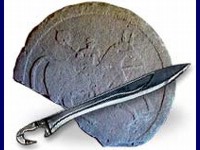K A I R O S
nedjelja, 27.03.2005.
celtiberia

Ursus, Arktos, Hartza, Oso, Orso, Bear… |
| < | ožujak, 2005 | > | ||||
| P | U | S | Č | P | S | N |
| 1 | 2 | 3 | 4 | 5 | 6 | |
| 7 | 8 | 9 | 10 | 11 | 12 | 13 |
| 14 | 15 | 16 | 17 | 18 | 19 | 20 |
| 21 | 22 | 23 | 24 | 25 | 26 | 27 |
| 28 | 29 | 30 | 31 | |||
Dnevnik.hr
Gol.hr
Zadovoljna.hr
Novaplus.hr
NovaTV.hr
DomaTV.hr
Mojamini.tv
KAIROS - tko si ti
- "Zašto ti kosa pada niz čelo?
Da me može uhvatiti tko mi dođe u susret .
Zašto si na zatiljku ćelav?
Kada krilatim nogama jednom poletim,
nitko me ne može uhvatiti straga,
ma koliko želio to."
buraz Pale
linkovi i BLOGovi za gušt
- indija 2004
duracellke su najbolje
romantičarka
pun mjesec
joga
antropozofija
Uskoplje
Danči's World
Izgubljena
ASANE
There & Back Again
castanea land
Internet Monitor
ICQ: 310251014



